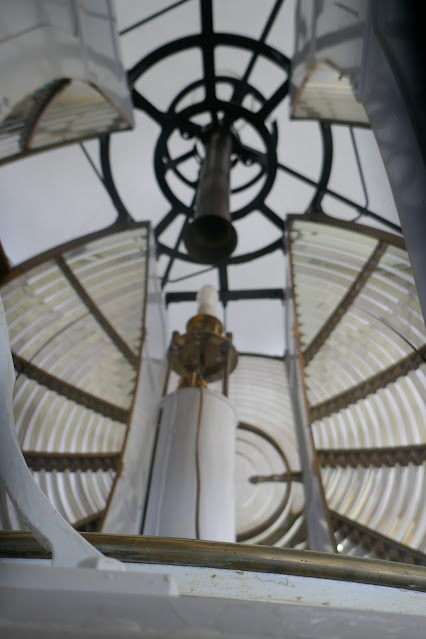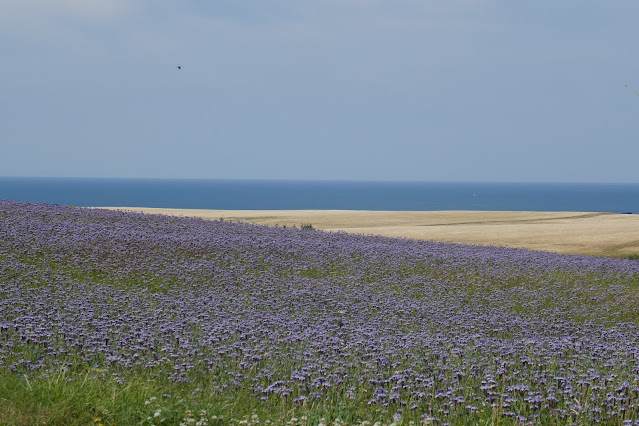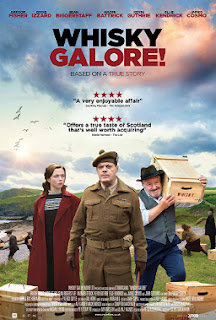Two Very Different Castles and Some Shortbread
Setting the Scene
 |
| Scotland |
 |
| Moray |
 |
| Our travels around Findochty just about fit into the red oval |
19-Jul-2022
Huntly
 |
| Aberdeenshire |
The small town (pop: 4,500) sits between the rivers Deveron and Bogie, just above their confluence. Traces of neolithic settlement have been found in the area and the remains of an Iron Age Hill Fort are still visible a mile east of the modern town centre. During the first millennium CE there was a large Pictish settlement at Tap o' Noth a couple of miles to the south.
 |
| Moray and Aberdeen with Huntly and Fyvie ringed |
Huntly Castle
The Pictish language and culture died out (exactly how or why remains unknown) and it was the Gaelic speaking Donchaid McDuff, Earl of Fife who built the first motte-and-bailey castle, known as Strathbogie Castle, at the confluence in 1180. Robert the Bruce stayed here in 1307 before defeating one of his rivals during his struggle to establish himself King of Scotland.
 |
| The motte of the original Strathbogie Castle |
Seven years later, David of Strathbogie swapped sides on the eve of the Battle of Bannockburn, deserting the future winner, Robert the Bruce, for the loser, King Edward II of England. After the battle Robert the Bruce, now the unchallenged King of Scotland, gave Strathbogie to the more reliable Sir Adam Gordon of Huntly. Despite their origins in far away Berwickshire, in southeast Scotland, Clan Gordon would become one of the most influential clans in the northeast.
Records from this period are sketchy, but apparently the Gordons did not bother replacing the wooden castle until it burned
down in 1452. Then, Alexander Gordon, the first Earl of Huntly built a strong stone rectangular tower house adjacent to the original motte.
For the next 250 years the Earls, later Marquesses of Huntly, then Dukes of Gordon backed the wrong sides; the Catholics in the Reformation,
the Royalists in the Civil War, James II in the Glorious Revolution and finally the
Jacobite incursions. Although one or two came to a sticky end, they twisted and turned and somehow
magicked their ‘strong rectangular tower house’ into, quite literally, a palace. They lost that after the Civil War, but kept their money and continued to upgrade their titles.
Despite rebelling against Mary Queen of Scots, being declared an outlaw and dying of apoplexy (allegedly) when arrested, the 4th Earl, George Gordon (known as the Cock o’ the North) was responsible for extensively remodelled the castle in the 1550s, the period just before his life became ‘interesting’.
 |
| Huntly Castle as it is now, after all the re-modelling, and the ruination. |
His grandson (another George) the 6th Earl and 1st Marquis of Huntly was educated in France and introduced new architectural ideas. The lower building to the right of the four-storey palace included a loggia, because northern Scotland’s weather is uniquely favourable to a north facing outdoor seating area (on one or two days a year, maybe).
 |
| The Gordon's Grand Design |
A full inventory from 1648 exists, and the Historic Environment Scotland sign board above gives the highlights. It also shows part of
the loggia, with nobody sitting around waiting for someone else to invent the barbecue.
This was actually the rear, the front was round the other side, across a courtyard containing the remains of outbuildings and the footing of the ‘strong
rectangular tower house’.
 |
| Huntly Castle and the courtyard at the front |
The 1st Marquis was responsible for the grand tower with much heraldry above the door.
 |
| The Great Tower, Huntly Castle |
Inside you can descend to the brewhouse, kitchen or bake house; there is also a prison.
 |
| The Bake House |
Upstairs the grander rooms do not look so comfortable when they are bare stone…
 |
| One of the Grander rooms |
…but the fireplaces hint at what they may have been. The one below, placed in a public room by Henrietta Stewart the 1st Marchioness
in 1600, has the Royal Arms of James VI placed centrally, with the monogram of
the marquis and marchioness below. The top has been defaced, probably because
it contained some catholic imagery.
 |
| Fireplace, Huntly Castle |
While in a room used for entertaining the most
favoured guests, she placed her husband and herself in the mantelpiece.
 |
| Another Huntly Castle fireplace |
The castle played its part in the Civil War. The 2nd Marquis (another George Gordon) was the last Gordon to live there. As a
prominent catholic and a royalist, his refusal to sign the protestant Covenant resulted in his
execution at the Market Cross in Edinburgh in 1649.
The 1648 inventory, mentioned above was made when George Gordon was on the run. The house was then cleared and the Gordons never returned. It was used on an ad hoc basis by both sides during the Jacobite uprisings, but was then left to become a quarry for local housebuilders.
 |
| Huntly Castle was left to deteriorate |
In the 19th century attitudes changed and the ruin was looked after. In 1923 it became a Scheduled
Monument in the care of Historic Environment Scotland.
The Gordons may have lost their castle, but did well enough otherwise being raised from the rank of Marquis to Duke of Gordon. Marriages have
brought the Dukedoms of Gordon, Lennox and Richmond together and the current incumbent
styles himself Charles Lennox-Gordon, 11th Duke of Richmond and lives in the
sort of style you might expect.
Huntly Town
Originally growing up to service the castle, the 17th and 18th centuries saw Huntly (formerly Milton of Strathbogie) develop as a market town with merchants and artisans serving the surrounding countryside. Largely rebuilt by Alexander Gordon, 4th Duke of Gordon, in the late 18th century, Huntly became a planned town with roads on a grid-pattern.
 |
| Straight streets crossing at right angles, Huntly |
Although hampered by its isolation the town became a centre for the growing of flax and production of linen, and the early 19th century
saw the population grow from around 1,000 in 1800 to 2,500 in 1834, despite the post-Napoleonic War depression. In 1845 the arrival of the
railway boosted the economy; Huntly station, on the Aberdeen-Inverness line, is
still in use. The late but swift Scottish Agricultural Revolution saw
capitalist agriculture replace peasant farming and by the mid-19th century Huntly
had become an important market and shipping centre – at the cost of a depopulated
countryside.
%20Stewarts%20Hall,%20Huntly.JPG) |
| Stewarts Hall, built as Huntly Town Hall in 1875, now a venue for concerts and other entertainments |
In 1836 George Duncan Gordon, 5th Duke of Gordon died without legitimate issue and the title died with him. In 1862 a second creation
of the title saw Charles Henry Gordon-Lennox, 6th Duke of Richmond add 1st Duke
of Gordon to his portfolio. As his main seat was at Goodwood in Surrey, some 900km
to the south, it is legitimate to wonder what sort of a reception he received
in Huntly. Surprisingly his tenants immediately raised money to put up a statue
to him, but then he was a nephew of the old 5th Duke.
%20Charles%20Henry%20Gordon-Lennos,%20Huntly.JPG) |
| Charles Henry Gordon-Lennox, Huntly |
Today Huntly is, in part, an Aberdeen commuter town, but local employment is available on a substantial industrial estate. One of the
town’s notable companies is Dean’s, makers of highly rated shortbread and other
comestibles. Founded in 1985 they opened a purpose-built bakery in 1999 and a ‘bistro’
in 2007. We thought it a good place to lunch. While I do like their shortbread,
particularly the lemon version, and we made good use of their shop, we were a
little disappointed that the ‘bistro’ is in fact just a ‘cafeteria on an
industrial estate.’
 |
| Dean's Bistro, Huntly |
Buckie and District Fishing Heritage Centre
On our way home we passed through the local metropolis of Buckie (it’s got a Tescos and everything!) and stopped at the Fishing Heritage Centre.
Run by volunteers they have artefacts, photos, models, a serious archive and three elderly men (so about my age, then) who were keen
to talk about their experiences at sea.
 |
| Fishing boats, Buckie Fishing Heritage Mueum |
For some reason we started discussing railways and they asked what we knew about the Moray Coast Railway. Apart from observing
the viaduct in Cullen and that Findochty had a Station Street, but no station, we knew little.
Completed in 1886, it ran for 25 miles from Portsoy to Elgin linking two pre-existing lines. It did good business in the early years
but struggled in the second half of the 20th century. The first station closed
in 1951 and it withered away to full closure in 1968 when the tracks were
removed. We were asked if we would like to see a film taken from the cab of a
steam train and speeded up to cover the whole journey in a few minutes. We would.
I am glad we dropped in, they were good people and the film was well worth seeing.
20-July 2022
Findochty to Fyvie
Next day we made a similar journey, first heading east through Cullen where the road threads its way through the arches of the viaduct
that once carried the Moray Coast Railway over the lower part of the village.
 |
| Cullen and its viaduct - and a rainshower |
Again, we drove through the green and gently undulating country of eastern Aberdeenshire. We took a different route from yesterday,
heading further east and then south through Turriff to Fyvie. The roads are not
large, but they are largely untroubled by traffic.
 |
| The green Aberdeenshire countryside |
Turriff is a town, a little smaller than Huntly, and rather less self-important, but a town nonetheless. Fyvie is not. Having set
the satnav for Fyvie Castle, we were 10km south of Turriff, and 2km
short of Fyvie with a forest to our right and a high brick wall to our left when
the satnav announced our arrival.
Fyvie Castle
Fyvie itself is just off the main road, and in the village we found a sign to the castle. A drive through the extensive grounds
took us to the car park from where a garden path, for want of a better
description, wound through some woods…
 |
| Approaching Fyvie Castle |
… and after a final turn to Fyvie Castle. Unlike Huntly it is not a ruin, also unlike Huntly it is owned by the Scottish National Trust so we had free entrance as English National Trust Members.
 |
| Fyvie Castle |
The first castle may have been built as early as 1211 by William the Lion (William I of Scotland) making it older than first wooden
fort at Huntly. Just over 100 years later Robert the Bruce held an open-air court
here. In 1390, it ceased to be a royal stronghold and possession passed to a series
of five successive families – the Prestons, Meldrums, Setons, Gordons and Leiths
– each of whom left their mark on the building, and erected a new tower (though
the Leith Tower is really a projecting wing).
The result is a large and complicated building. Seen from above it is L-shaped with a second smaller L attached to the upstroke, it
is a building that grew organically, without being planned.
 |
| Fyvie Castle, main façade |
From the front, the Preston tower built between 1390 and 1433 is on the right. It is tempting to call it the oldest visible part of
the castle, any stones left from the days of William the Lion will be in the
foundations. But it looks no older than the Meldrum Tower on the left (1433-1596) or the Seton Tower, interpolated between them in 1599. The shape might
be organic but the building does not have obviously old and new parts.
Inside the House
 |
| Grand Hall, Fyvie Castle |
From the Main Hall in the Seton Tower, where we waited for the guided tour to start, a wheel staircase delivers visitors to the upper
floors. It is a development of the common-or-garden medieval spiral staircase,
but much wider, much more gently graded and with even steps. If I had realised
it was important, I would have photographed it, but I didn’t. Allegedly the
younger Gordons were known to race their horses down it.
This led us to the Billiards Room…
 |
| Billiards Room, Fyvie Castle |
…and then to a dining room.
 |
| Dining Room, Fyvie Castle |
The final owner before the National Trust, Alexander Forbes-Leith was born in Aberdeen in 1847. The son of an admiral he joined the Royal
Navy aged 13 and by 22 was a Lieutenant. He left the navy and went to America
where in 1871 he married Marie Louise January, whose father was director of an
Illinois steel mill. There is a portrait of her by Francisque-Edouard Bertier
in the dining room.
 |
| Marie Louise January, Fyvie Castle |
Forbes-Leith had his own career in the steel industry, and became a partner in a merchant bank. By 1889 he had made his pile and bought
Fyvie Castle. He poured money into its
restoration and moved here with his wife, son and daughter. What we see today
is a Scottish architectural extravaganza on the outside and early 20th century
luxury living on the inside.
We continued into a comfortable sitting room.
 |
| Sitting Room, Fyvie Castle |
Most of the art on the walls is from the Forbes-Lieth collection, but not the painting of a warlike, young (if thinning on top) highlander
with an inappropriate classical background. The portrait by Pompeo Batoni is of
Colonel William Gordon and was commissioned by Gordon in 1766 on his Grand Tour.
 |
| Col William Gordon |
Among the many paintings are works by Thomas Gainsborough, John Millais and 13 portraits by the Scottish artist Henry Raeburn, best known for The
Skating Minister.
There are other sitting and dining rooms, a library and some bedrooms, but I think we have the idea.
 |
| Library with person entering. Why did I not do this shot again? |
During the long pre-Leith-Forbes era, the house (allegedly) collected several ghosts and has the reputation of being one of Britain’s most
haunted. Although our guide told these stories with relish and seemed to believe
them, I will not waste time on such nonsense.
Outside the House
We lunched in the wee tea room and proceeded outside.
Like all 18th century aristocrats worth their salt, the Gordons landscaped their grounds and created gardens.
 |
| Lawn and a collection of magnificent, mature native trees |
It is easy to believe such people spent their vast and often unearned wealth with frivolity and narcissism – maybe William Gordon struck
that pose in those garments against that background with due irony, or maybe
not. But, to be fair, many planted trees, not for themselves or even the next generation,
but for those of us who have come after, and we should thank them for that - and
do the same.
And we can enjoy their walled gardens…
 |
| Walled Garden, Fyvie Castle |
…and an impressive onion patch.
 |
| Now that's an onion patch, Fyvie Castle |
And having done that, we drove back north to
Findochty.
Part 1: Glasgow (1) Irn Bru, The Clyde and La Lanterna:
Part 2: Glasgow (2): A Walking Tour
Part 3: The Battle of Culloden and Cawdor Castle
Part 4: Fraserburgh and Portsoy
Part 5: Huntly and Fyvie
Part 6: Findochty, Portknockie and Cullen
Part 7: Stirling

























